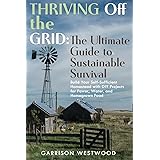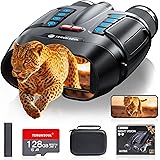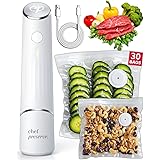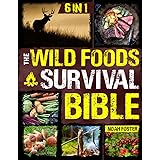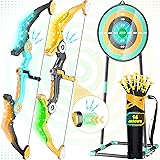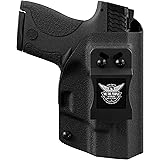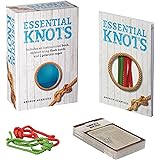Building a robust emergency medical kit requires more than just a box of band-aids. As Nurse Amy from DoomandBloom.net skillfully illustrates in the video above, the world of **survival medicine gauze** and wound dressings is surprisingly diverse, each type serving a critical, distinct purpose. Understanding these variations is not merely academic; it’s a foundational skill for anyone serious about medical preparedness, especially when professional help is not an option.
The complexity of wound care in a crisis demands specific tools for specific jobs. Just as a master craftsman selects the perfect saw for a particular cut, a proficient prepper needs to know which dressing to apply for bleeding control, burn management, or delicate healing. This guide expands on Nurse Amy’s essential overview, diving deeper into the nuances of various gauze and dressing types to ensure your medical supplies are both comprehensive and intelligently stocked.
The Foundational Layer: Sterile vs. Non-Sterile Gauze
The most basic distinction in wound care begins with sterility. When compiling your **emergency wound dressings**, recognizing the difference between sterile and non-sterile gauze is paramount for preventing infection, a significant threat in any survival scenario. Non-sterile gauze, often found in large, economically priced packs of 200, serves as your frontline material.
This type is excellent for initial wound cleaning, applying pressure to stop bleeding, or as a secondary dressing over a sterile layer. Think of non-sterile gauze as the robust, all-purpose utility cloth in your medical toolbox. Conversely, sterile gauze is the precision instrument; it’s individually wrapped and certified free of bacteria, making it suitable for direct contact with an open wound after it has been thoroughly cleansed. Applying a sterile dressing immediately following wound irrigation acts as a critical barrier, preventing new contaminants from entering the compromised tissue and safeguarding against sepsis or severe local infection.
Sizing Up Your Options: Standard Gauze Pads
Just like a carpenter has hammers of different weights for varied tasks, your medical kit should feature gauze pads in several sizes. The common 4×4 (four inches by four inches) gauze pad is the undisputed workhorse for most moderate wounds and abrasions. Its generous surface area allows for effective coverage and absorption.
Smaller 2×2 pads are ideal for minor cuts, punctures, or dressing smaller anatomical areas like fingers or toes. For specialized needs, eye pads offer a unique, contoured shape designed to fit comfortably over the orbital bone, providing protection for eye injuries without exerting undue pressure on the globe itself. These different sizes ensure you have the appropriate coverage, minimizing waste and optimizing treatment efficacy for the specific wound at hand.
Beyond Basic Absorbency: Non-Adherent Dressings (Telfa and More)
Not all wounds respond well to traditional gauze, especially those with delicate new tissue or significant exudate. This is where non-adherent, or “non-stick,” dressings become indispensable. A popular brand name, Telfa, is often used generically to describe these highly specialized pads. They feature a smooth, shiny surface that prevents the dressing from sticking to the wound bed, acting like a frictionless barrier.
Imagine attempting to peel a label off a wet surface versus a dry one; the smooth surface ensures the dressing lifts away without disrupting the fragile process of epithelialization. This property makes them particularly vital for treating burns, skin grafts, or any wound where newly formed skin is vulnerable. Using a standard gauze on such a wound can be akin to tearing down a freshly built wall when changing the dressing, potentially causing re-injury, pain, and delaying recovery. Non-adherent pads are the gentle guardians of nascent healing, minimizing trauma during dressing changes and promoting a faster, more comfortable recovery.
Securing and Sustaining: Rolled Gauze and Wraps
Effective wound management isn’t just about the pad; it’s also about how you secure it. Rolled gauze, often recognized by brand names like Curlex or Kling wrap, offers immense versatility. This material, essentially a very long strip of loosely woven gauze, is rolled into a compact form, ready to be unfurled as needed. It excels at holding sterile pads in place on extremities, conforming snugly to contours without requiring adhesive tape that can cause blistering or pull hair.
Beyond securing, rolled gauze can be balled up to create a substantial wad for direct pressure to control significant bleeding, leveraging its absorbent qualities. Furthermore, it’s a cornerstone for the “wet-to-dry” dressing technique, a critical method for managing certain complex wounds. This technique involves soaking sterile rolled gauze in a diluted antiseptic solution (like a very weak, tea-colored Betadine solution or sterile water), placing it wet into a wound (commonly for avulsions—where a chunk of skin is torn away, much like a divot taken from a lawn), and then covering it with a dry sterile dressing. As the wet dressing dries, it adheres to necrotic tissue and debris, which are then gently removed with the dressing change, effectively debriding the wound. This process is like a controlled, internal exfoliation, preparing the wound bed for healthier tissue growth, though it requires frequent changes and careful monitoring.
Specialized Battlefield Dressings for Major Trauma
In high-stakes environments, standard gauze may simply not be enough. More severe injuries demand specialized **bleeding control** and wound covering solutions, mirroring the robust equipment used by combat medics.
ABD Pads: The Abdominal Advantage
ABD pads, short for “abdominal pads,” are a step up in size and absorbency for larger, more exudative wounds. Typically measuring around 5×9 inches, these pads feature a thick, multi-layered design optimized for absorbing substantial amounts of fluid, whether blood or wound exudate. While not as non-adherent as Telfa, they possess a slightly smoother surface than regular gauze, making them somewhat less prone to sticking. ABD pads are the heavy-duty sponges of your medical kit, ready to tackle larger surface area wounds and provide a substantial barrier.
Blood Stoppers and Trauma Dressings
For high-pressure situations, composite dressings like “blood stoppers” offer a rapid, all-in-one solution. These typically combine a non-stick dressing pad with an integrated elastic wrap, allowing for quick application and firm pressure. Imagine a self-contained band-aid that can also apply significant compression, much like a mechanic’s quick-fix patch for a leaky pipe. This design eliminates the need for separate gauze and tape or wraps, making them ideal for single-person application or use in chaotic environments.
Even larger are dedicated trauma dressings, often massive pads measuring 10×12 or even 12×30 inches. These are specifically designed for very extensive wounds, such as those caused by blast injuries, large avulsions, or deep lacerations spanning a significant area of the body. Stockpiling a few of these is crucial, as a single large trauma can quickly deplete an entire collection of smaller pads. These are the equivalent of a heavy-duty tarpaulin, designed to cover and contain a catastrophic breach, buying precious time until more definitive care can be rendered.
The Israeli Bandage: A Combat-Proven Solution
The Emergency Bandage, universally known as the Israeli Bandage, is a prime example of battlefield innovation brought to civilian preparedness. This ingenious device integrates a sterile pad, a highly elasticized wrap, and a pressure applicator (or closure bar) into a single unit. Its design allows for one-handed application, a crucial feature if you are the injured party needing to self-treat. The pressure bar provides a mechanical advantage, enabling the user to apply direct, sustained pressure to a bleeding wound, effectively acting as an improvised tourniquet if necessary, or simply a very effective pressure dressing.
This bandage is like a Swiss Army knife for severe bleeding control: versatile, robust, and designed for efficient action under duress. It’s not just a dressing; it’s a system for rapid hemorrhage control, making it an invaluable addition to any **first aid kit** aimed at true medical self-reliance.
Retention Strategies: Elastic Bandages and Cohesive Wraps
Once a dressing is applied, it must stay in place. Traditional Ace bandages offer elastic compression and support, invaluable for sprains, strains, or simply holding a bulky dressing. However, they typically require clips or tape to secure the end.
A more advanced alternative is the cohesive wrap, known by brand names like Co-Band or Sensi-Wrap. This material has a unique property: it adheres to itself without sticking to skin, hair, or other surfaces. Picture a wrap that has a built-in, gentle magnet on its own surface, allowing it to fuse seamlessly as you layer it. This self-adherent quality eliminates the need for any additional fasteners, making application quicker and more secure, particularly for dynamic areas or individuals with tape allergies. Crucially, these wraps should never be applied too tightly, as constricting circulation can cause further harm, much like over-tightening a vise can damage the material it holds.
The Improvised Arsenal: When Purpose-Built Isn’t Available
True preparedness extends beyond purpose-built supplies to the art of improvisation. In dire emergencies, when your carefully curated medical kit is exhausted or unavailable, knowing how to leverage everyday items for wound care can be life-saving. Feminine hygiene products, specifically maxi pads and tampons, are excellent examples of highly absorbent, often individually wrapped items that can be repurposed. While not sterile, their absorbency makes them suitable for applying pressure to control bleeding or as a temporary padding layer. Diapers, similarly, offer substantial absorbency and a soft inner lining, making them adaptable for covering larger wounds or as makeshift abdominal pads.
These items, found in most households, represent a critical contingency in a medical crisis. While they don’t replace dedicated **emergency wound dressings**, they offer a viable, albeit non-sterile, option when faced with extreme scarcity. It’s about adapting and utilizing what’s on hand, turning everyday items into vital tools for survival when all other help is genuinely “not on the way.”
The Premium Tier: Advanced Gauze Technologies
For those looking to equip their kit with the absolute best, there’s a premium tier of gauze products designed for specific, often complex, wound management challenges. These include gauze pads impregnated with Vaseline (petroleum jelly), silver, or various antibacterial agents. Vaseline-impregnated gauze is invaluable for managing burns and non-adherent wounds, creating a moist healing environment and preventing the dressing from sticking, acting as a soft, protective film. Silver-impregnated dressings leverage silver’s antimicrobial properties to fight infection in contaminated wounds, like a microscopic defensive perimeter. Antibacterial gauzes, meanwhile, deliver targeted medication directly to the wound bed to either prevent or treat localized infections.
While highly effective, these advanced options come with a higher price tag and often have specific expiration dates due to the active ingredients. This makes them less suitable for large-scale, long-term stockpiling, but they can be critical for treating specific, high-risk wounds where traditional methods might fall short. Integrating a select few of these specialized items can elevate your **survival medicine gauze** capabilities to an expert level, providing advanced care when every advantage counts.
Ask Nurse Amy: Your Survival Gauze Questions
Why is it important to know about different types of medical gauze for emergencies?
Understanding different types of medical gauze is a foundational skill for emergency preparedness. Each type serves a distinct purpose for various wounds when professional help might not be available.
What is the key difference between sterile and non-sterile gauze?
Sterile gauze is individually wrapped and certified bacteria-free for direct contact with open wounds to prevent infection. Non-sterile gauze is used for general cleaning, applying pressure to stop bleeding, or as a secondary dressing over a sterile layer.
What are non-stick dressings, like Telfa, used for?
Non-stick dressings are used for delicate wounds such as burns or skin grafts. They have a smooth surface that prevents the dressing from sticking to the wound, which minimizes pain and re-injury during dressing changes.
What is an Israeli Bandage and why is it helpful in an emergency?
The Israeli Bandage is an all-in-one device that combines a sterile pad, an elastic wrap, and a pressure applicator. It’s highly effective for quickly applying direct, sustained pressure to control severe bleeding, even with one hand.
Can common household items be used for wound care if special supplies aren’t available?
Yes, in critical emergencies, highly absorbent household items like maxi pads, tampons, or diapers can be repurposed. While not sterile, they can temporarily help control bleeding or cover larger wounds.



